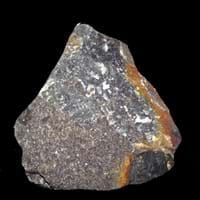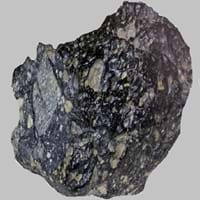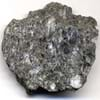Definition
Dolomite is a sedimentary rock containing more than 50 percent of the mineral dolomite by weight
Granite is a very hard, granular, crystalline igneous rock which consists mainly of quartz, mica, and feldspar and is often used as building stone
Origin
Southern Alps, France
Unknown
Discoverer
Dolomieu
Unknown
Etymology
From French, from the name of Dolomieu (1750–1801), the French geologist who discovered the rock
From Italian granito, which means grained rock, from grano grain, and from Latin granum
Class
Sedimentary Rocks
Igneous Rocks
Sub-Class
Durable Rock, Medium Hardness Rock
Durable Rock, Hard Rock
Group
Not Applicable
Plutonic
Other Categories
Coarse Grained Rock, Fine Grained Rock, Medium Grained Rock, Opaque Rock
Coarse Grained Rock, Opaque Rock
Texture
Earthy
Granular, Phaneritic
Color
Black, Brown, Colourless, Green, Grey, Pink, White
Black, Grey, Orange, Pink, White
Durability
Durable
Durable
Scratch Resistant
Yes
Yes
Appearance
Glassy or Pearly
Veined or Pebbled
Interior Uses
Decorative Aggregates, Homes, Interior Decoration
Countertops, Decorative Aggregates, Entryways, Floor Tiles, Flooring, Homes, Hotels, Interior Decoration, Kitchens, Stair Treads
Exterior Uses
Garden Decoration, Office Buildings
As Building Stone, As Facing Stone, Bridges, Paving Stone, Garden Decoration, Near Swimming Pools, Office Buildings, Resorts
Other Architectural Uses
Not Yet Used
Curbing
Construction Industry
As a Flux in the Production of Steel and Pig Iron, As a Sintering Agent in Steel Industry to process Iron Ore, As Dimension Stone, Cement Manufacture, for Road Aggregate, Making natural cement, Manufacture of Magnesium and Dolomite Refractories, Production of Glass and Ceramics, Serves as an Oil and Gas Reservoir rock
As Dimension Stone
Medical Industry
Taken as a Supplement for Calcium or Magnesium
Not Yet Used
Antiquity Uses
Artifacts, Jewellery, Monuments, Sculpture, Small Figurines
Monuments, Sculpture, Small Figurines
Commercial Uses
An Oil and Gas Reservoir, As a Feed Additive for Livestock, Gemstone, Metallurgical Flux, Production of Lime, Soil Conditioner, Source of Magnesia (MgO)
Curling, Gemstone, Laboratory bench tops, Tombstones, Used in aquariums
Types
Boninite and Jasperoid
Igneous Protolith Granite, Sedimentary Protolith Granite, Mantle Granite, Anorogenic Granite, Hybrid Granite, Granodiorite and Alkali Feldspar Granite
Features
Host Rock for Lead, Traps for subsurface fluids like Oil and Natural Gas., Zinc and Copper Deposits
Available in Lots of Colors and Patterns, It is One of the Oldest, Strongest and Hardest Rock
Archaeological Significance
Famous Monuments
Data Not Available
Agia Sophia in Istanbul, Turkey, Blue Domed Church in Santorini, Greece, Blue Mosque in Istanbul, Charminar in Hyderabad, India, Diana, Princess of Wales Memorial Fountain in London, UK, Ephesus in Turkey, Georgia Guidestones in Georgia, US, Hermitage in Saint Petersburg, Khajuraho Temples, India, Mahabalipuram in Tamil Nadu, India, Mysore Palace in Karnataka, India, Signers Monument in Augusta, Georgia, Statue of Liberty in New York, USA, Taj Mahal in Agra, India, Tower Bridge in London, Vietnam Veterans Memorial in Washington, US, Washington Monument, US
Famous Sculptures
Data Not Available
Avukana Buddha Statue in Sri Lanka, Lincoln Memorial in America, Mount Rushmore National Memorial in South Dakota, US, The Colossal Red Granite Statue of Amenhotep III in Karnak, Egypt
Pictographs
Used
Not Used
Petroglyphs
Used
Not Used
Formation
Dolomite rocks are originally deposited as calcite or aragonite rich limestone, but during diagenesis process, the calcite or aragonite is transformed into dolomite.
Granite is an intrusive igneous rock which is very hard, crystalline and is visibly homogeneous in texture and forms by melting of continental rocks
Mineral Content
Clay Minerals, Pyrite, Quartz, Sulfides
Amphibole, Biotite, Feldspar, Hornblade, Micas, Muscovite or Illite, Plagioclase, Pyroxene, Quartz
Compound Content
NaCl, CaO, Carbon Dioxide, Magnesium Carbonate, MgO
Aluminium Oxide, CaO, Iron(III) Oxide, FeO, Potassium Oxide, MgO, MnO, Sodium Oxide, Phosphorus Pentoxide, Silicon Dioxide, Titanium Dioxide
Types of Metamorphism
Burial Metamorphism, Cataclastic Metamorphism, Contact Metamorphism
Burial Metamorphism, Cataclastic Metamorphism
Types of Weathering
Not Applicable
Biological Weathering
Types of Erosion
Not Applicable
Chemical Erosion, Sea Erosion, Water Erosion
Grain Size
Medium to Fine Coarse Grained
Large and Coarse Grained
Fracture
Conchoidal
Not Available
Porosity
Less Porous
Less Porous
Luster
Vitreous and Pearly
Dull to Grainy with Sporadic parts Pearly and Vitreous
Cleavage
Perfect
Not Available
Toughness
1
Not Available
Specific Gravity
2.8-3
2.6-2.7
Transparency
Transparent to Translucent
Opaque
Density
2.8-2.9 g/cm3
2.65-2.75 g/cm3
Resistance
Heat Resistant, Pressure Resistant, Wear Resistant
Heat Resistant, Wear Resistant
Deposits in Eastern Continents
Asia
China, India
China, India, Iran, Saudi Arabia, Sri Lanka, Taiwan, Thailand, Turkey, Vietnam
Africa
Morocco, Namibia
Angola, Egypt, Madagascar, Namibia, Nigeria, South Africa
Europe
Austria, Italy, Romania, Spain, Switzerland
Austria, Belgium, Finland, France, Germany, Italy, Norway, Sardinia, Spain, Switzerland, The Czech Republic, Venezuela
Others
Not Yet Found
Not Yet Found
Deposits in Western Continents
North America
Mexico, USA
Canada, USA
South America
Brazil, Colombia
Not Yet Found
Deposits in Oceania Continent
Australia
New South Wales, Queensland, Yorke Peninsula
Not Yet Found









